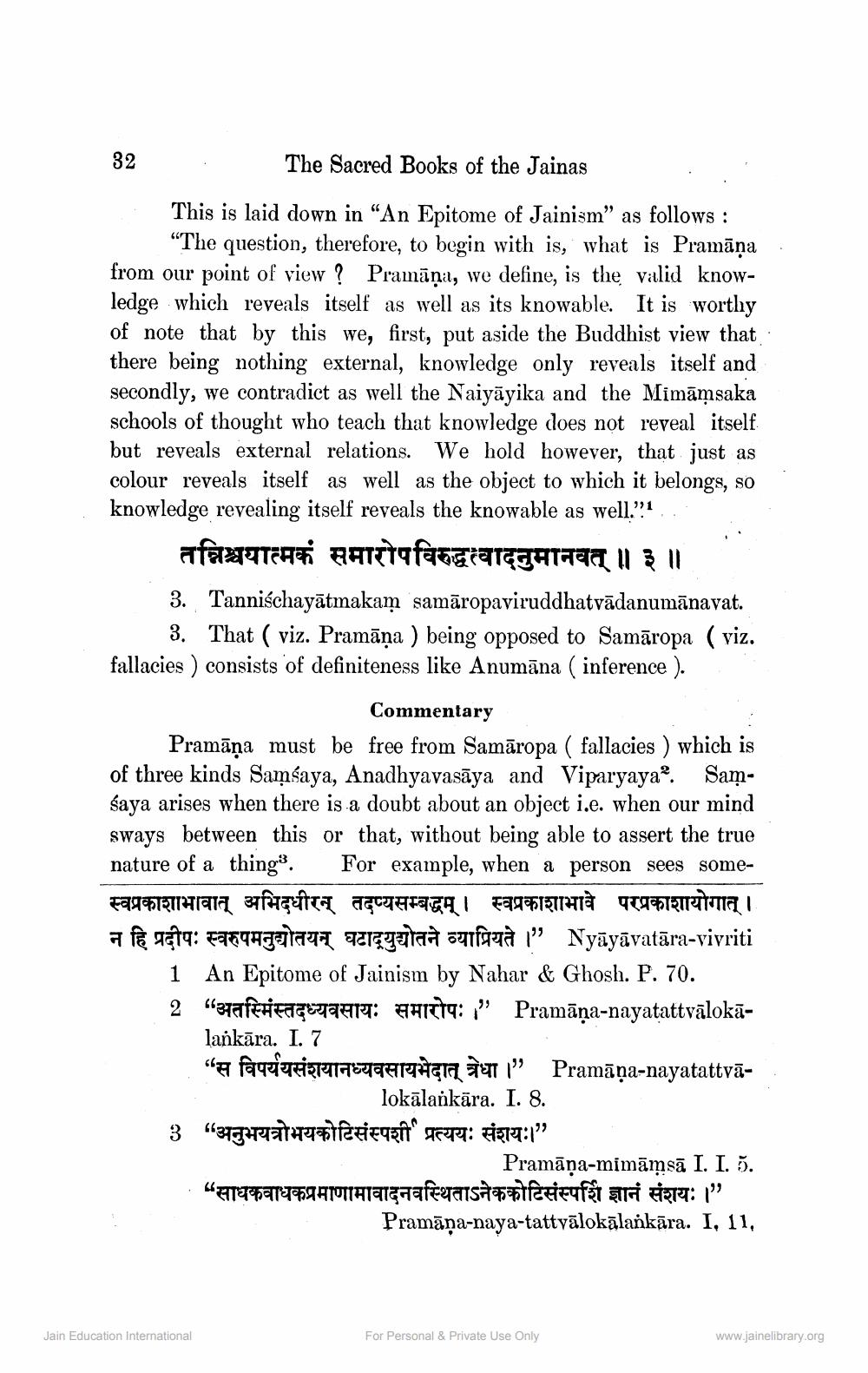________________
The Sacred Books of the Jainas
This is laid down in "An Epitome of Jainism" as follows: "The question, therefore, to begin with is, what is Pramāņa from our point of view? Pramana, we define, is the valid knowledge which reveals itself as well as its knowable. It is worthy of note that by this we, first, put aside the Buddhist view that there being nothing external, knowledge only reveals itself and secondly, we contradict as well the Naiyayika and the Mimāmsaka schools of thought who teach that knowledge does not reveal itself but reveals external relations. We hold however, that just as colour reveals itself as well as the object to which it belongs, so knowledge revealing itself reveals the knowable as well."1
afaxurazi zaıìafasstenggenaza || 3 ||
32
3. Tanniśchayatmakam samāropaviruddhatvādanumānavat. 3. That (viz. Pramāņa) being opposed to Samaropa (viz. fallacies) consists of definiteness like Anumana ( inference).
Commentary
Pramāņa must be free from Samaropa ( fallacies) which is of three kinds Samsaya, Anadhyavasaya and Viparyaya". Samsaya arises when there is a doubt about an object i.e. when our mind sways between this or that, without being able to assert the true nature of a thing. For example, when a person sees someस्वप्रकाशाभावात् अभिदधीरन् तदप्यसम्बद्धम् । स्वप्रकाशाभावे परप्रकाशायोगात् । न हि प्रदीपः स्वरूपमनुद्योतयन् घटाद्युद्योतने व्याप्रियते ।" Nyāyāvatāra-vivriti An Epitome of Jainism by Nahar & Ghosh. P. 70. 2 " अतस्मिंस्तदध्यवसायः समारोपः " Pramāna-nayatattvālokalankara. I. 7
1
"faqdarian" Pramāṇa-nayatattvā
lokālankära. I. 8.
3 “अनुभयत्रोभयकोटिसंस्पर्शी' प्रत्ययः संशयः।”
Jain Education International
Pramāṇa-mimāmsā I. I. 5.
" साधकवाधकप्रमाणामावादनवस्थिताऽनेक कोटिसंस्पर्श ज्ञानं संशयः । "
Pramana-naya-tattvālokālaṁkāra. I, 11,
For Personal & Private Use Only
www.jainelibrary.org




